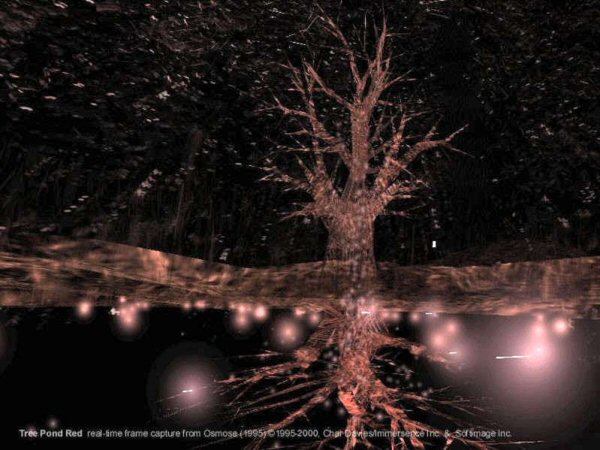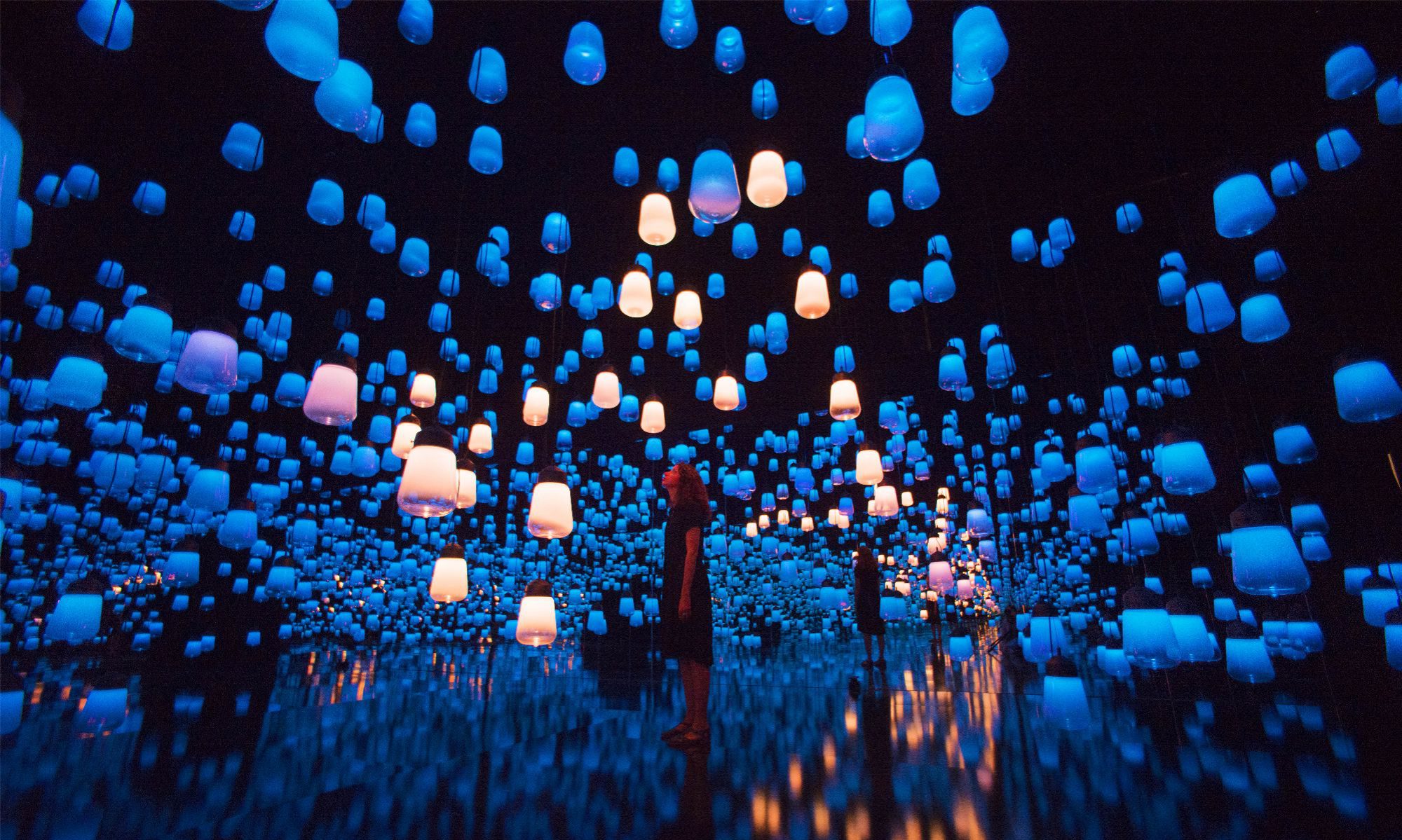In Osmose, Char Davies employed Virtue Reality (VR) to create an immersive experience of an imaginary world. Here the viewers are invited to wander a multi-dimensional space which is in a way lifelike but not exactly resemble the real physical world we live in. (e.g. the gravitational rules don’t quite apply here.) The navigation through Osmose is done through immersants’ own breath and balance. Davies aimed to provide a ‘first-person’, interactive point of view that can offer multi-dimensional experience.

Still from Osmos (1995), Char Davis
As opposing to image realism, which is one the main pursuits of Media Technology of the time according to Scott Fisher’s 1989 essay“Virtual Environments“, the visual aesthetic of Osmose is semi-representational/semi-abstract, which serves to ‘evoke’ rather than illustrate. This rather poetic and abstract experience, as reported by the artist in 1998 have elicited a series of “unusual” sensations, experienced by participants immersed in “Osmose”:
a feeling of being somewhere else, in another “place”
losing track of time
heightened awareness of their own sense of being
a deep sense of mind/body relaxation
an inability to speak rationally after the experience
a simultaneous feeling of freedom from physical bodies and acute awareness of them
intense emotional feelings, euphoria and overwhelming sense of loss when the session ends.
Norberg-Schulz has made the assumption as early as in 1971 that “a mobile, wholly-changing environment can be disorientating”; however it is still powerful to think how impactful a 15 minutes virtual experience could do to impact our physical well being, especially people experiencing “an inability to speak rationally after the experience”. In connection to Ivan Sutherland’s 1965 vision to the ultimate display, the Wonderland into which Alice walked, the world where the existence of matters are manipulatable, what struck me is that the most powerful display one could imagine might be achievable in the realm of the mind. If we could actually prove the dualism of body and mind, perhaps the virtual chair would be actually good enough to be physically sit in, or at least in the mind of the immersants.

Totem from the movie Inception that could tell a dream from reality

